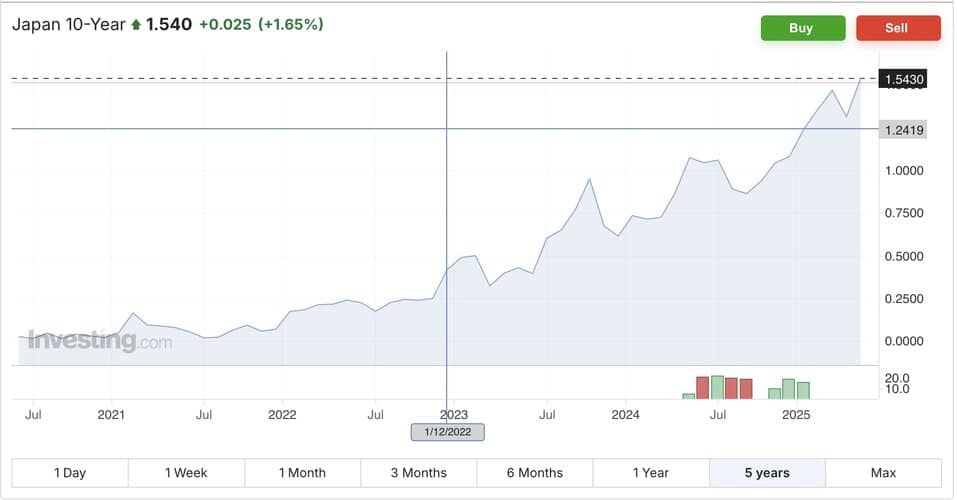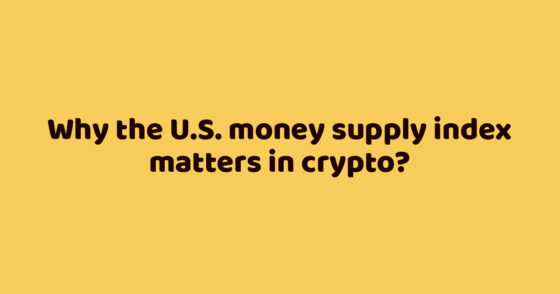While most are busy discussing Bitcoin’s new all-time highs, seasoned market participants are watching a far more fundamental signal — the rise in Japanese Government Bond (JGB) yields.
Japan is exiting the era of “free money”
Since 2016, the Bank of Japan has kept 10-year bond yields around 0% through its Yield Curve Control (YCC) mechanism.
But in 2024–2025, that control has been gradually lifted. Today, yields have surpassed 1.5% — a structural shift for the Japanese debt market. For context: back in 2022, yields were around just 0.1%.

Capital repatriation: when money comes home
Japanese institutional investors are among the largest holders of foreign debt. According to the U.S. Treasury Department, Japanese investors hold over $1.1 trillion in U.S. Treasuries.
The rise in JGB yields is making domestic assets attractive again — especially as currency-hedged returns on U.S. assets are declining. Holding dollars is becoming less profitable.
The consequences are global
Japan is the largest foreign holder of U.S. government debt. As JGB yields rise, Japanese investors have less incentive to buy U.S. bonds — they may prefer to keep capital at home.
This could push U.S. yields higher due to declining demand for Treasuries. That, in turn, may hit all risk assets — including cryptocurrencies. So while BTC is hitting record prices, we may be heading into a period of tightening global liquidity.
Where does Bitcoin fit in?
Rising yields always challenge risk assets. But if a liquidity shortage unfolds, central banks may be forced to ease monetary policy.
And in such an environment, Bitcoin becomes a favorable asset: both as a hedge against currency debasement and a beneficiary of a monetary pivot.
Conclusions
Shifts in the Japanese bond market could trigger a transformation of the entire global financial architecture.
It’s signals like these — not headlines about $111k — that shape real capital flows.








